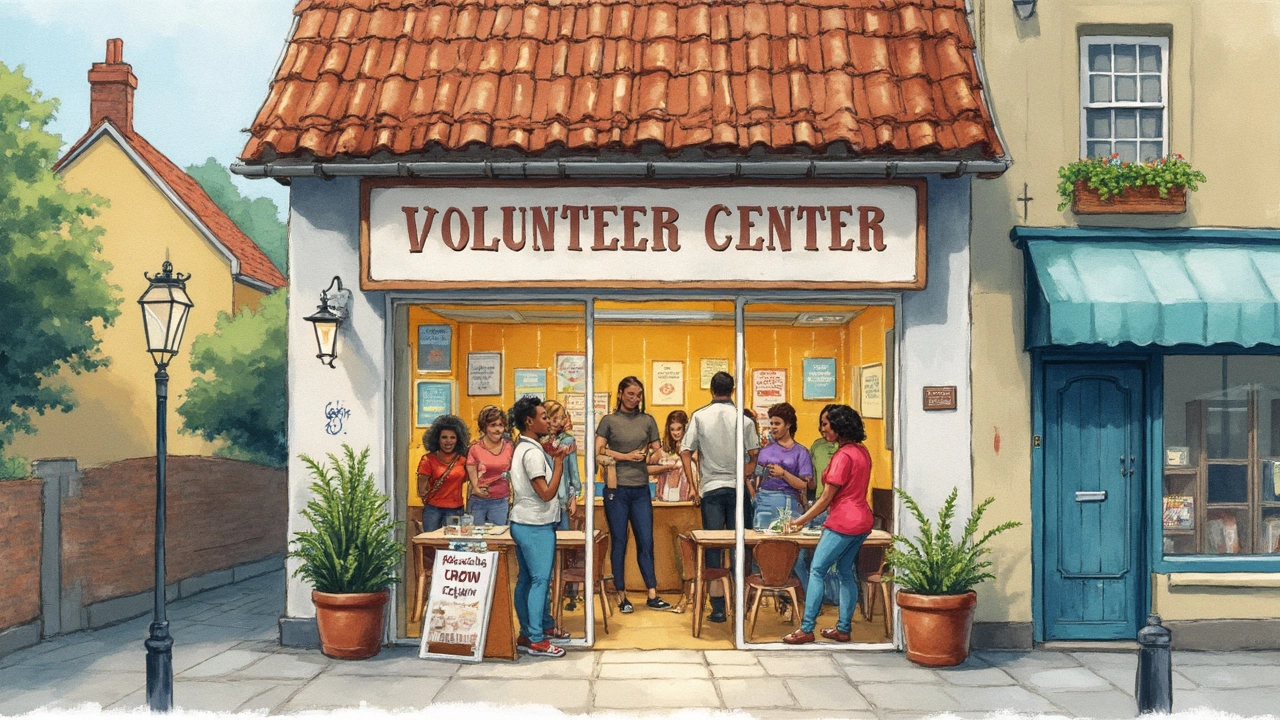Volunteering is not what it used to be. Remember when community service was the go-to for a Saturday morning? These days, finding volunteers is like searching for a needle in a haystack. What's happening?
Our lives have gotten busier than ever. Between juggling work, family, and binge-watching the latest shows, there's just not much time left for lending a hand. And with so many options on how to spend our time, volunteering sometimes gets lost in the shuffle.
But it’s not just about busyness. Many people simply aren’t aware of the volunteer opportunities out there. It’s like they're hidden in plain sight. And sometimes, even when we do know about them, they don't seem relevant or appealing.
So, what can we do to spark interest again? How can we make volunteering something people can’t wait to do? In this article, let's get into these questions and explore how we can turn things around for volunteering.
- The Changing Face of Volunteering
- Why Fewer People Volunteer Today
- Impact on Communities
- Bringing Back the Volunteer Spirit
- How You Can Make a Difference
The Changing Face of Volunteering
Over the past decade, volunteering has transformed, and not just because people are getting busier. The traditional idea of spending a day at a soup kitchen or cleaning up a park is evolving into something more flexible.
Technology plays a major role in this shift. With the rise of online volunteering platforms, people can now contribute from the comfort of their own homes. Whether it's mentoring students through video calls or helping non-profits with graphic design projects, the opportunities have become more varied and accessible.
Virtual Volunteering: The New Normal
You might think of volunteering as an in-person activity, but virtual volunteering is here to stay. It allows organizations to reach people worldwide, breaking geographical barriers. Tasks like writing proposals, managing social media, and even providing legal advice can now be done from anywhere.
Here's some food for thought: According to a 2023 survey, about 35% of all volunteer hours were logged online. This shift to virtual platforms is opening up volunteer opportunities like never before, especially for those who couldn't participate otherwise due to location or busy schedules.
Flexible Commitments
The days of signing up for a year-long commitment are fading. People want to help, but they also value flexibility. This means more organizations are offering short-term projects or 'micro-volunteering' options that can be completed in just an hour or two. This way, folks can chip in whenever they get a spare moment.
- Short-term projects (e.g., a weekend event)
- Micro-volunteering tasks (e.g., writing a blog post)
- Event-based volunteering (e.g., manning a booth at a fair)
Diverse Skills Needed
Another big change is in the skills needed. It's not just manual labor and event support anymore. Organizations often seek people with specific skills like digital marketing, IT support, financial planning, and more. This means everyone has something valuable to contribute, no matter their background.
This change is opening doors for a wide array of people ready to offer their expertise, proving that volunteering is anything but static or one-size-fits-all.
Why Fewer People Volunteer Today
There's no denying that volunteering is facing a tough time. It seems like fewer people are raising their hands to help out. Let's break down some reasons for this trend.
1. Busy Lifestyles
The world is moving faster, and so are we. Our packed schedules make it harder to carve out time to volunteer. People often say they have to work extra hours just to get by or are balancing family commitments. It's a constant juggle, and volunteering often takes a back seat.
2. Lack of Awareness
Sometimes the opportunity to help isn't obvious. Many potential volunteers aren't aware of needs in their own communities. If you're not in the loop, it's easy to miss out on chances to get involved. The key is getting the word out there.
3. Fewer Appealing Opportunities
Not every community service opportunity is a perfect fit. If people feel their skills aren't being used or if the cause feels impersonal, they're less likely to return. Matching people with meaningful opportunities makes all the difference.
4. Growing Digital World
With everything going digital, people often feel they can support causes through online donations or activism from home. While this isn't necessarily a bad thing, it can lead folks away from hands-on volunteering.
5. Economic Factors
Volunteering has sometimes been a luxury. With rising living costs, many prioritize paid work over unpaid volunteer time. Here's a quick glance at recent UK stats:
| Year | Percentage of Volunteers |
|---|---|
| 2019 | 41% |
| 2023 | 28% |
Understanding these reasons helps us realize why fewer people might volunteer today. But this doesn't mean the trend can't be turned around. In our next section, we'll look into how impactful it can be and ways to reignite interest.

Impact on Communities
Communities thrive on human connection, and volunteering has always played a big role in building those connections. But with fewer people stepping up, the effects are starting to show. Let's break this down.
Loss of Services
Many organizations rely heavily on volunteers to function. Think about food banks or shelters. When there aren't enough helping hands, services can be cut or even disappear. This means people in need might not get the support they count on.
Community Engagement
When people volunteered regularly, it fostered a sense of belonging and pride in communities. Without that, neighborhoods can feel less tight-knit. Like when was the last time you knew everyone's name on your street?
Economic Impact
Fewer volunteers can mean increased costs for nonprofits who might have to hire additional paid staff to fill the gaps. This can strain already tight budgets. According to some estimates, volunteers in the UK provide billions of pounds worth of services each year. That’s a lot of money!
Personal Growth and Skills
Volunteering isn't just about helping others; it’s also a chance for learning and growth. When participation dips, people miss out on experiences that could enhance their job prospects or contribute to personal fulfillment. It’s like not using that gym membership — a missed opportunity!
Bridging the Gap
To turn the tide, we need to make volunteering more accessible and appealing. By highlighting the positive impacts, like how good it feels to help out, or the chance to learn new things, we can encourage more involvement. After all, who doesn’t want to make a difference?
Bringing Back the Volunteer Spirit
So, how do we reignite the passion for volunteering? There are several ways to make it appealing again, and they all start with a fresh approach.
Make Volunteering Accessible
First off, let's make volunteering as easy as ordering pizza. Many folks don’t volunteer because they simply don’t know how to get started. Clear, easily accessible information and a straightforward signup process are key. Websites and mobile apps dedicated to matching volunteers with causes can break down barriers without forcing people to bend over backward.
Align with Personal Interests
People are more likely to volunteer if they feel a personal connection to the cause. So, it’s crucial to offer a wide range of opportunities. Whether someone is passionate about environmental protection or helping the elderly, there's a fit for every interest. Personalized recommendations can help individuals find these tailor-made opportunities.
Short but Meaningful Commitments
Time is a precious commodity. Offering short-term projects or one-off events can attract those unable to commit to long-term volunteering. This allows them to contribute without feeling tied down.
Community Incentives
A little recognition can go a long way. Small incentives, like public shout-outs or volunteer appreciation events, can motivate people. Local businesses can get in on the act too, offering rewards like discounts or freebies to volunteers. It’s a win-win!
We can also look to some inspiring stats. For instance, communities that actively promote volunteering often see a rise in participation by 20%. This isn't just a number—it's a testament to the power of outreach and motivation.
So, let’s make volunteering visible, easy, and meaningful again. With a little effort and creativity, bringing back the spirit of community service could become a reality sooner than we think!

How You Can Make a Difference
So, you’re ready to dive into volunteering but aren't sure where to start. The good news is, making a difference doesn’t have to be complicated or time-consuming. Here are some practical ways to get going and maximize your impact.
Find Your Passion
Start by asking yourself what you're passionate about. Animals, education, the environment? Aligning your volunteer efforts with interests that matter to you makes it more rewarding. Not only will you be more motivated, but your enthusiasm can be infectious!
According to a recent study, people who volunteer in areas they are passionate about are 30% more likely to continue in their volunteer efforts long-term.
Use Your Skills
Everyone's got skills, and volunteering is a great chance to use them for good. Are you a tech whiz? Help a charity get their online systems in order. Love cooking? Maybe a soup kitchen could use your skills. Think of your talents like superpowers for good causes!
"The best way to find yourself is to lose yourself in the service of others." - Mahatma Gandhi
Start Small
If you're feeling overwhelmed, remember you don't have to jump in the deep end. Maybe start with an hour or two a month and then gradually get more involved. Small steps can lead to big impacts.
Connect with Local Organizations
Most communities have local organizations or initiatives hungry for volunteers. Don't be shy—reach out and ask how you can help. Many have volunteer coordinators who can guide you to roles that suit your schedule and skills.
Ever considered virtual volunteering? Many organizations offer online opportunities, perfect if you're pressed for time or can't travel.
Stay Committed
Consistency is key in volunteering. Communities rely on dependable help, so stick with it! Plus, the more you volunteer, the more you'll build relationships and see the fruits of your labor.
Tracking the Impact
It can be satisfying to see just how much of a difference you're making. Want to keep track? Here's a small table to help evaluate your volunteering efforts:
| Month | Hours Volunteered | Impact (e.g., meals served, funds raised) |
|---|---|---|
| January | 5 | 50 meals served |
| February | 8 | 200 books sorted |
Remember, volunteering is not only about what you give but also what you learn and take away. By taking these steps, you're not just helping others; you're building a stronger, more connected community and developing skills along the way!
